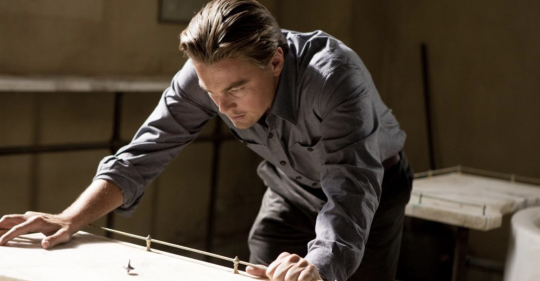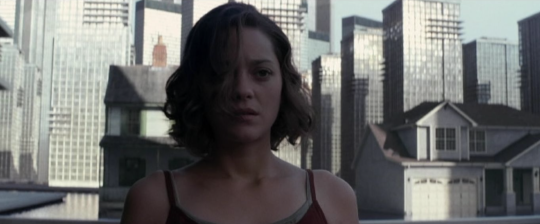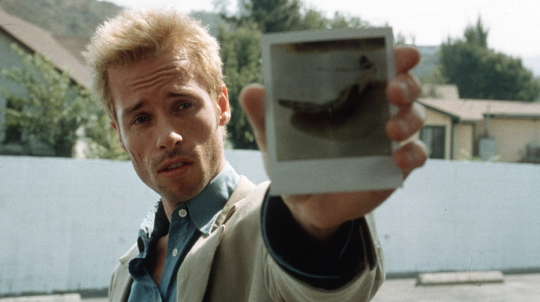Christopher Nolan: The Man Who Wasn’t There by Daniel Carlson
By Yasmina Tawil

1.
So, we’ll start with the fact that all movies are make-believe. It’s a bunch of actors on a set, wearing costumes and standing with props picked out by hordes of people you’ll never see, under the guidance of a director, saying things that have been written down for them while doing their best to say these things so that it sounds like they’re just now thinking of them. We all know this—saying it feels incredibly stupid, like pointing out that water is wet—but it’s still worth noting. There is, for example, no such person as Luke Skywalker. Never has been, never will be. He was invented by a baby boomer from Modesto. He is not real.
And we know this, and that’s part of the fun. We know that Luke Skywalker isn’t real but is being portrayed by an actor (another boomer from the Bay Area, come to think of it), and that none of the things we’re seeing are real. But we give ourselves over to the collective fiction for the greater experience of becoming involved in a story. This is one of the most amazing things that we do as humans. We know—deep down, in our bones, without-a-doubt know—that the thing we’re watching is fiction, but we enter a state of suspended reality where we imagine the story to be real, and we allow ourselves to be moved by it. We’ve been doing this since we developed language. The people telling these stories know this and bring the same level of commitment and imagination and assurance that we do as viewers, too. The storyteller knows that the story isn’t real, but for lack of a better way to get a handle on it, it feels real. So, to continue with the example, we’re excited when Luke Skywalker blows up the Death Star because he helped the good guys win. For us viewers, in this state of mutually reinforced agreement, that “happened.” It’s not real, but it’s “real”—that is, it’s real within the established boundaries of the invented world that we’ve all agreed to sit and look at for a couple of hours. Every viewer knows this, and every filmmaker acts on it, too. Except:
Christopher Nolan does not do this.
2.

There’s no one single owner or maker of any movie, and anyone who tells you different has their hand in your pocket. But there’s an argument to be made that when somebody both writes and directs the movie, it’s a bit easier to locate a sense of personhood in the final product. (This is all really rough math, too, and should not be used in court.) Christopher Nolan has directed 11 films to date, and while his style can be found in all of them, his self is more present in the ones where he had a hand in the shaping of the story—and crucially, not just that, but in the construction of the fictional world. Take away the superhero trilogy, the remake of a Norwegian thriller, the adaptation of a novel, and the historical drama, and Nolan’s directed five films that can reasonably be attributed to his own creative universe: Following (1998), Memento (2000), Inception (2010), Interstellar (2014), and Tenet (2020). These movies all involve themes that Nolan seems to enjoy working with no matter the source material, including identity, memory, and how easily reality can be called into question when two people refuse to concede that they had very different experiences of the same event. Basically, he makes movies about how perception shapes existence. How he does this, though, is unlike pretty much everybody else.
Take Inception. After a decade spent going from hotshot new talent to household name (thanks to directing the two highest-grossing Batman movies ever made, as well as the first superhero movie to earn an Oscar for acting), he had the credit line to make something big and flashy that was also weird and personal. So we got an action movie that, when first announced in the Hollywood trades, was described as being set within “the architecture of the mind.” Although this at first seemed to be a phrase that only a publicist could love, it turned out to be the best way to describe the film. This is a film, after all, about a group of elite agents who use special technology to enter someone’s subconscious dream-state and then manipulate that person’s memories and emotions. The second half of the film sees team leader Dom Cobb (Leonardo DiCaprio) and the rest of the squad actually descend through multiple nested subconsciouses to achieve their goal, even as they’re chased every step of the way by representations of Mal (Marion Cotillard), Dom’s late wife, who committed suicide after spending too much time in another’s subconscious and lost the ability to discern whether she was really alive or still in the dream-world.
I say “representations” because that’s what they are: Mal is long dead, but Dom still feels enormous guilt over his complicity in her actions, and that guilt shows up looking like Mal, whose villainous actions (the representation’s actions, that is) are just more signs of Dom not being able to come to grips with his own past. It’s his own brain making these things up and attacking itself, and it chases his entire crew down three successive layers of dream worlds. You get caught up in the movie’s world as a viewer, and you go along because Nolan is pretty good at making exciting movies that feel like theme-park rides. You accept that Dom and everybody else refer to Mal as Mal and not, say, Dom. Dom even addresses her (“her”) when her projection shows up, speaking to her as if she’s a separate being with her own will and desires and not a puppet that he’s pretending not to know he’s controlling. It’s only later that you realize that the movie is in some ways just a big-budget rendition of what it would look like to really, really want to avoid therapy.
Which is what makes Nolan different from other filmmakers:
None of this is actually happening.
Again, yes, it’s happening in the sense that we see things on screen—explosions, chases, a fight scene in a rotating hallway that’s still some of the best practical-effects work in modern action movies—but within the universe of the film, none of what’s going on is taking place in the real world. It’s all unfolding in the subconsciouses of Dom’s teammates. In the movie’s real world, they’re all asleep on a luxury jet. They’re “doing” things that have an outcome on the plot, but Nolan sets more than half the movie inside dreams. It’s a movie about reality where we spend less time in reality than in fantasy. Half the movie is pretend.
For Nolan, filmmaking is about using a dazzling array of techniques to create a visual spectacle that distracts the viewer from the fact that the real and true story is happening somewhere else: in the fringes we can’t quite see, in the things we forget to remember, or even in the realm of pure speculation.
3.


